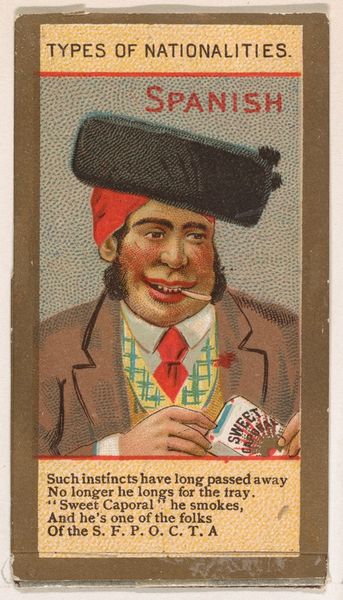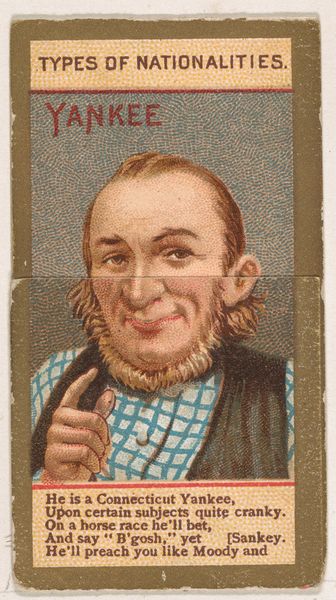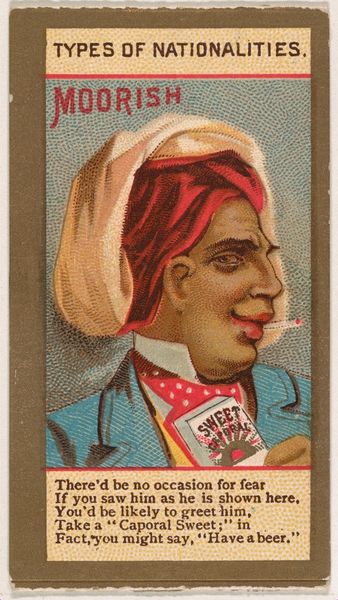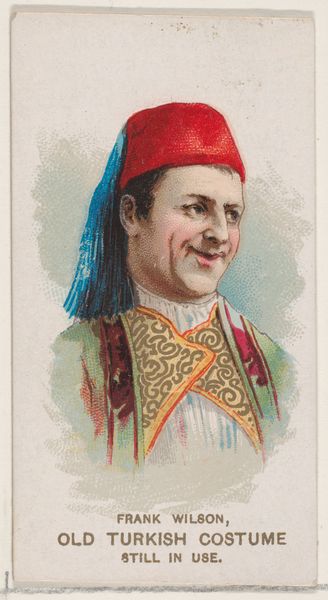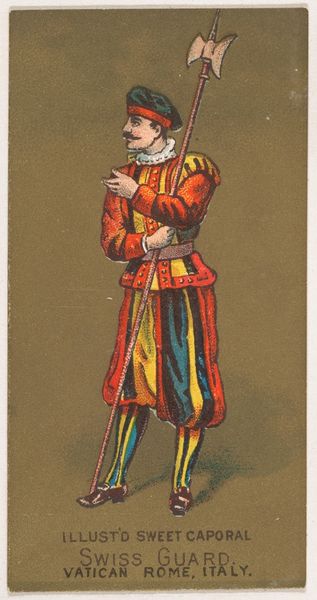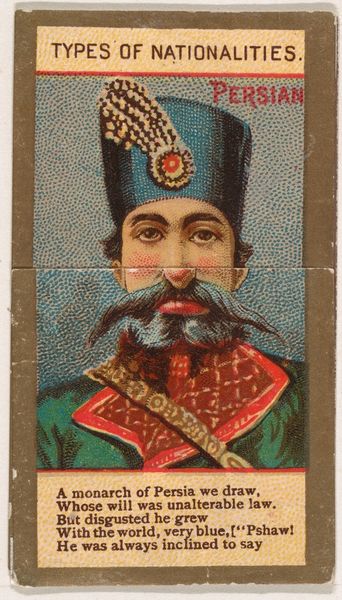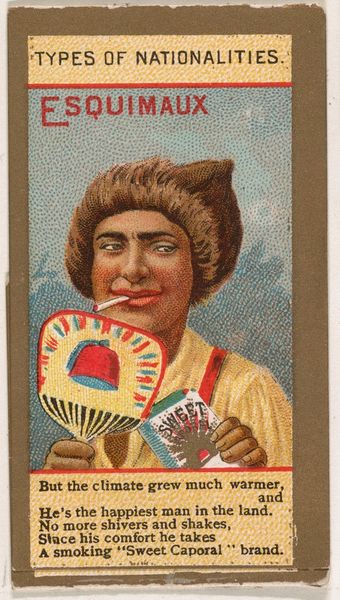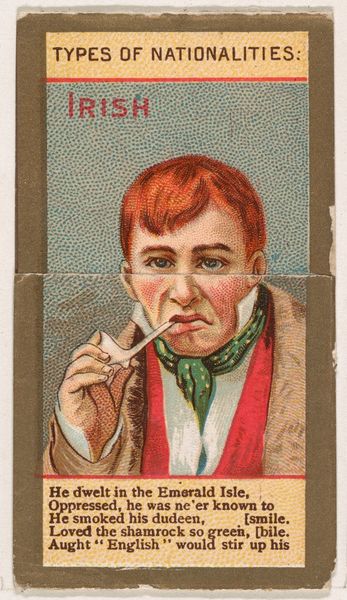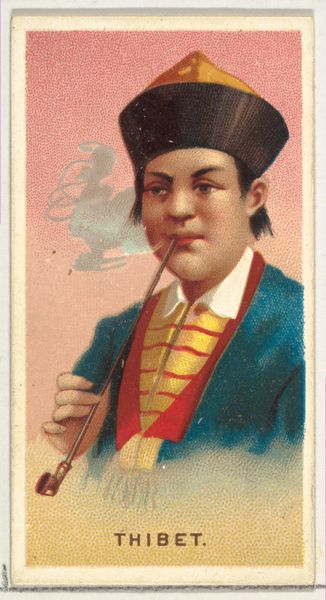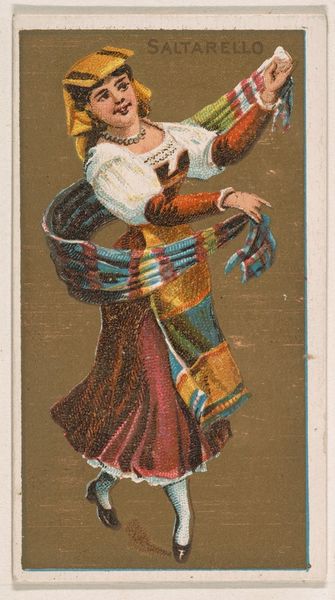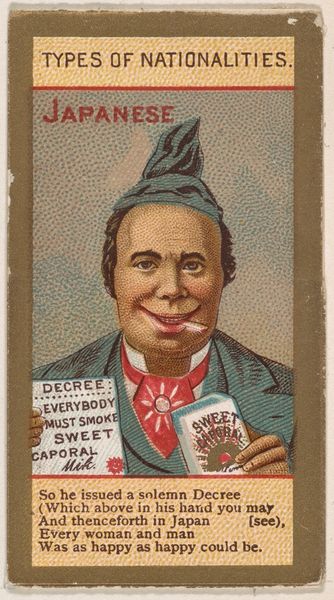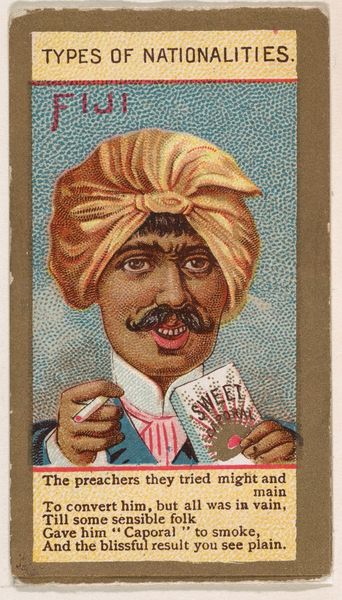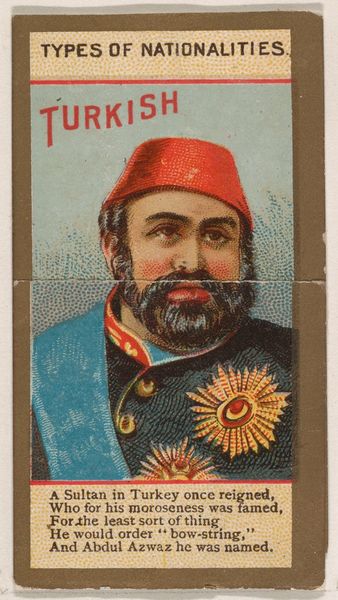
Japanese, from Types of Nationalities (N240) issued by Kinney Bros. 1890
0:00
0:00
print, paper
#
portrait
# print
#
paper
#
coloured pencil
#
japonisme
Dimensions: Sheet (Folded): 2 11/16 × 1 7/16 in. (6.8 × 3.7 cm) Sheet (Unfolded): 6 7/8 × 1 7/16 in. (17.4 × 3.7 cm)
Copyright: Public Domain
Editor: This small print, "Japanese, from Types of Nationalities," was created by Kinney Bros. around 1890. The subject's face appears rather solemn, almost imposing. How do you interpret this work? Curator: It’s fascinating to consider this image within the context of its creation. It stems from a moment of intense cultural exchange and, arguably, appropriation known as Japonisme, a period when Japanese art and aesthetics profoundly impacted Western art. Note the choice of representing a 'type' – here, a 'Japanese' individual. What symbols strike you most prominently? Editor: I guess the clothing seems significant? And the fan? Curator: Precisely. Clothing acts as immediate signifiers of identity and status. The details might hint at attempts to convey authenticity, though filtered through Western perception. Similarly, a fan isn't merely an object; it becomes a stand-in for notions of Eastern grace and composure. Editor: So, the symbolism flattens the actual culture? Curator: In some ways, yes. It becomes a symbol of Japan for Westerners, distilling and, inevitably, reducing the complexity of lived experiences and a sophisticated visual culture like Ukiyo-e to a few, easily digestible markers. This commercial card participates in constructing and circulating a simplified vision of the “Other.” Do you think the poem does a similar flattening? Editor: It seems like it. The Mikado aspires to be philanthropic, a benevolent man. That's… interesting, putting it mildly. Curator: Indeed. What's especially revealing is not just the image itself but what it tells us about the cultural biases and desires of its intended audience. The image's intent, in part, perpetuated stereotypes that reflect anxieties around rapidly shifting global power dynamics. It served, subtly or not, to 'define' the Japanese, so as to both market goods, but also establish cultural categories for a Western audience. Editor: I never would have considered all those layers. Thanks for highlighting what’s at play here. Curator: It's in these overlooked corners of history that we find the most compelling reflections of ourselves and our shared human story.
Comments
No comments
Be the first to comment and join the conversation on the ultimate creative platform.
